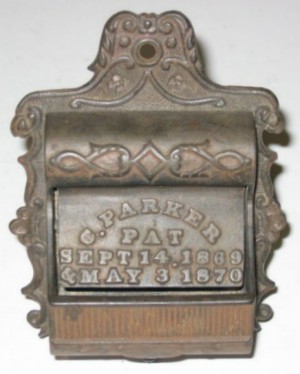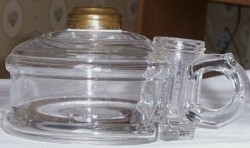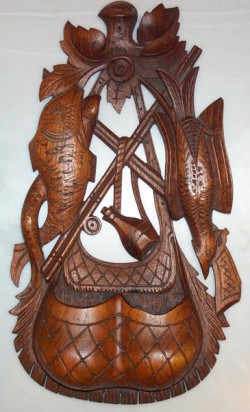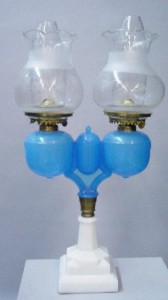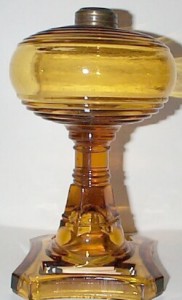John Walker, a chemist and druggist from Stockton-on-Tees, holds the distinction of being the inventor of one of the world's greatest advances - the friction match. Walker's recipe was a mixture of potassium chlorate, antimony sulphide and gum. Walker discovered that if this mixture was applied to the end of a wood splint and drawn through folded strip of sandpaper, it would ignite. These early matches were primitive by today's standards and would be perfected over the coming years by a number of inventors. Walker's matches, called "friction lights," were first sold on April 7, 1827 to a Mr. Hixon, a solicitor in the town, as noted in his sales ledger. Until that time, all but the wealthiest of people had to light lamps and candles from either another flame or from fire struck with flint and steel. Now humans had the additional freedom to produce fire, anywhere, on demand. Sadly, John Walker did not patent his discovery and made little money from his invention.
The 1883-84 Bradley & Hubbard Mfg. Co. Illustrated Catalogue of Kerosene Fixtures has a page of match safes. Among these items are cast iron and bronzed safes, as well as full-figural match safes in the likeness of a beetle and a fly or bee. The 1886 Charles Parker Company catalog depicts "Parker's Patent" pocket match safes, self-closing parlor match safes, friction plates for matches, and match safes for the table. Parker's #10 Self-Closing Parlor Match Safe is shown above.
A number of match holders were made to be hung directly from a hanging chandelier or other suspended lamp - keeping the method of lighting close at hand. Usually hung from the bottom finial, these holders were made in many shapes like the one shown at left, used for burnt matches. Figural designs in the shape of kettles, canoes and umbrellas can be found. Pocket match safes were widely used during the period. Most were made of metal including brass, nickel and silver. Many forms were highly ornamental and often figural. The one depicted (above, left) is said to represent William Henry Harrison, the ninth President of the United States. He died on April 4, 1841 in Washington D.C. of pneumonia a month after taking office. He was the first president to die in office. Pocket safes were often given by stores as advertising premiums.
References
|
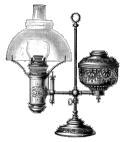
| Reference Desk | Lamp Information | Other Resources | On-Line Shopping |

Purveyors of Antique Lighting and Accessories
435 Main Street
 Hurleyville, New York 12747
Hurleyville, New York 12747
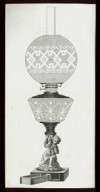 Beach's Patent Match Safe Base for Lamps trade card.
Beach's Patent Match Safe Base for Lamps trade card.Pat'd March 21, 1876
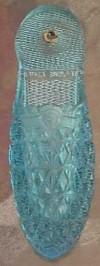
Hanging wall match
holder in the form of a
pressed glass slipper.
Pat'd June 13, 1876
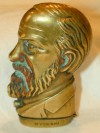 Pocket match safe,
Pocket match safe,Match striker on base.
Pat'd October 9, 1888
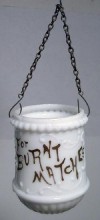 Hanging burnt match
Hanging burnt matchholder. Suspended
from the finial of a
hanging lamp.
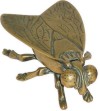 Figural match safe in
Figural match safe in the likeness of a fly.
Wings lift to access
matches.
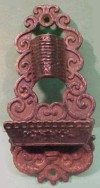
Cast iron wall plate
for a bracket lamp
with a match holder.
necessity, the mother of invention

Match Holders and Match Safes
^ Top of Page
Privacy Policy | Terms and Conditions of Use | Announcements
Copyright © 2001-2011 ~ Daniel Edminster | The Lampworks ~ All Rights Reserved
